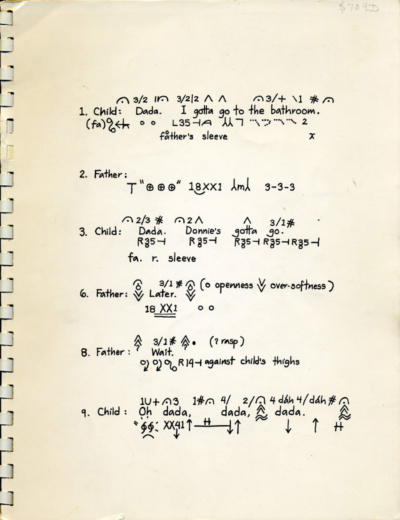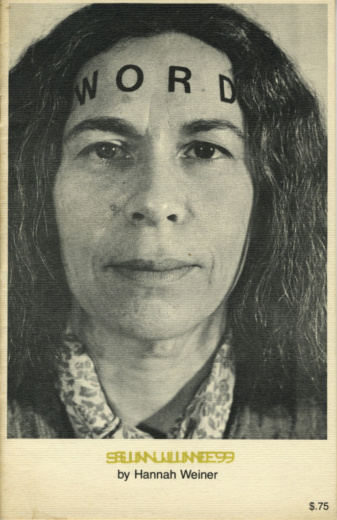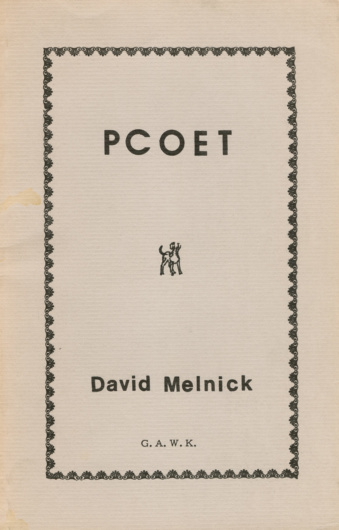In 1982, two literary journals as disparate as Ironwood and The Paris Review both featured collections of language writing. Ron Silliman, in his introduction to the collection in Ironwood, traces a kind of “anti-history” back to the early ’70s with the publication of two important journals, Tottel’s and This. Silliman makes the important point that the phenomenon is based on a created audience and that language writing is most significantly identified as community based, with almost all its practitioners sharing “the responsibility of creating the institutions through which the work can be made public.” He goes on to say that “the project of this writing is the discovery of a community.” [10] In his introduction to the selection of language writing published in The Paris Review, Charles Bernstein offers the useful hint that this is a “writing that takes as its medium, or domain of intention, every articulable aspect of language.”

Toothpick, Lisbon and the Orcas Islands, vol. 3, no. 1 (Fall 1973), edited by Michael Wiater. This is the “Andrews/Wiater Issue.”
Although language writing surely flourished in the 1980s, a fact amply demonstrated by several anthologies (such as In the American Tree: Language Realism Poetry, edited by Ron Silliman, and “Language” Poetries: An Anthology, edited by Douglas Messerli) and critical works (Code of Signals, a special issue of Io edited by Michael Palmer; Barrett Watten’s Total Syntax; Charles Bernstein’s Content’s Dream; Bernstein and Bruce Andrews’s The L=A=N=G=U=A=G=E Book; and Ron Silliman’s The New Sentence), it was, from its beginnings in the early ’70s, an influential and always controversial presence in the poetry community at large. At first, the lines between the soon-to-be-identified language poets and various other vaguely defined schools or groups were not so clearly drawn. For instance, Barrett Watten’s first book, Opera—Works, was published by Bill Berkson’s New York School–identified Big Sky, and Roof magazine, an important New York–based outlet for language writing, was born at Naropa Institute in 1976—its early issues included both Beat and New York School poets.
The second small anthology of language writing appeared in the ethnopoetics journal Alcheringa in 1975—but by the end of the ’70s, those associated with language writing had thoroughly established their presence and made visible their various unique and shared tendencies through an incredible network of magazines, presses, and reading and talk series located primarily in San Francisco and New York, with a smaller group active in Washington, D.C. Magazines and presses such as L=A=N=G=U=A=G=E, This, A Hundred Posters, E pod, Hills, Dog City, Vanishing Cab, Miam, Roof, Sun & Moon, The Figures, Asylum’s, Tuumba, The Difficulties, Poetics Journal, and others served as venues for writing (poetry as well as critical prose) by Ron Silliman, Charles Bernstein, Lyn Hejinian, Bruce Andrews, Barrett Watten, Robert Grenier, Steve Benson, Rae Armantrout, Bob Perelman, Nick Piombino, Diane Ward, Carla Harryman, Alan Davies, and Johanna Drucker, among many others.

Streets and Roads 1 (Spring 1974), edited by Kit Robinson.
Citation:
10. Ron Silliman, ed., “Language Writing,” Ironwood 20 [vol. 10, no. 2] (Fall 1982): 64.



